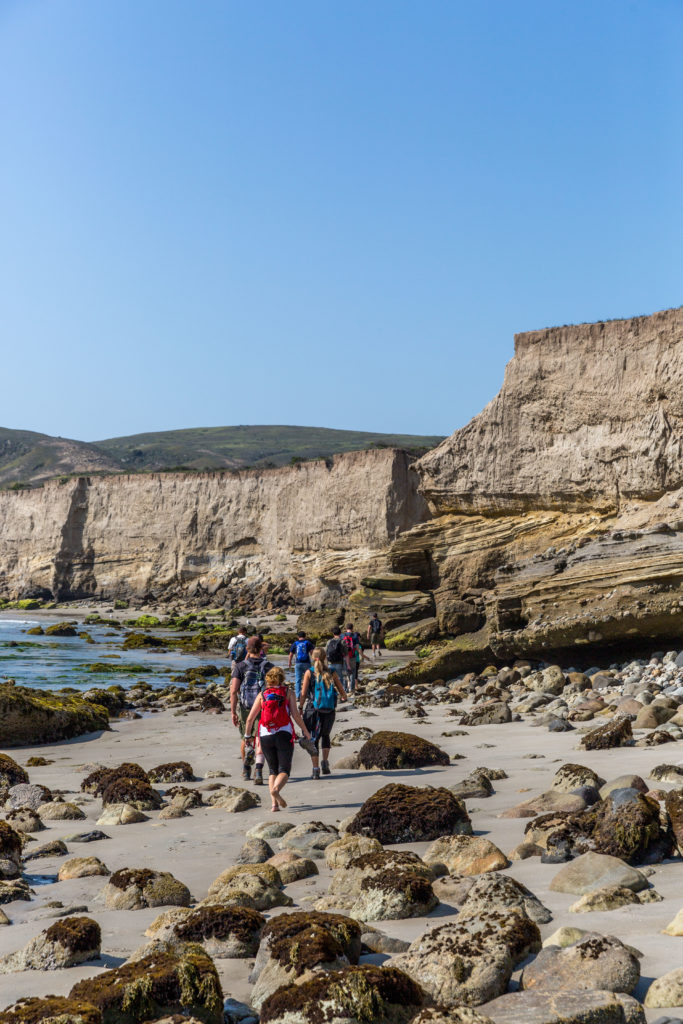CAMARILLO — CSU Channel Islands (CSUCI) has received two grants that will give undergraduate researchers a sophisticated analysis tool and Isbell Middle School students what could be their first close look at the coastline and Santa Rosa Island.
Professor of Environmental Science & Resource Management Sean Anderson, Ph.D., received $149,036 from the U.S. Army for a project entitled “Expanding Capabilities to Characterize, Track and Reduce Pollutants via Next-Generation Microscope-Based FTIR.”
“That means CSUCI is getting a cutting-edge microscope that can shoot a beam of infrared light at a particle of microplastic and get what amounts to its chemical fingerprint,” Anderson said.
“We can use it to ‘fingerprint’ the chemicals that comprise the microplastic and therefore tell if it is polyethylene, PVC pipe, etc. While the FTIR technology (short for Fourier-Transform InfraRed spectroscopy) has been around for a few decades, the miniaturization is a new phenomenon. This will allow us to fingerprint items thinner than a human hair.”
The microscope is about three feet high, four feet wide and three feet deep and is run by a computer. The computerized microscope is usually found in FBI labs or sophisticated engineering labs.
Students will be trained with the high-tech microscope, which will give them a leg up when applying for jobs involving the analysis of pollutants. The U.S. Department of Defense is among the employers who need individuals trained in this 21st century technique, which is partially what motivated the U.S. Army to award the grant.
“We will be training students not just to understand microplastics, but to learn modern techniques for characterizing pollutants,” Anderson said.
“The advantage of being able to analyze the composition of the microplastics will help us understand which microplastic reduction measures are working and what are not. The microscope is so discerning that it can even provide clues about the origin of the pollutants.”
“It can tell us whether it’s PVC, and if so, which company,” Anderson said. “Is it plastic used for shoe rubber or elastic used in underwear bands. We can track the contaminants in sand crabs and where they came from. It’s Environmental CSI.”
Santa Rosa Island Research Station Director Russ Bradley’s $59,034 award from the National Oceanographic and Atmospheric Administration (NOAA) is in support of “Crossing the Channel,” a year-long series of middle school field trips led by CSUCI students and faculty.
The grant is through NOAA’s California Bay Watershed Education and Training (B-WET) program, which aims to enhance environmental literacy by supporting individuals to understand, protect and restore watersheds and related ocean, coastal, and Great Lakes ecosystems.
Bradley and coauthors of the grant, Isbell Middle School teachers Chris Rini and Cynthia Martin, will lead Isbell students on field trips throughout the year that will explore Ventura County’s watersheds and natural environment. The project will also include trips to the Santa Rosa Island Research Station.
“This is about cultivating the next generation of environmental scientists,” Bradley said. “We will introduce these middle school students to environmental education with trips from the upper watershed down to the ocean.”
The first field trip, which was in September, was to the Channel Islands Boating Center at the Channel Islands Harbor, where the students did some splashing in the waters before learning some scientific techniques for gathering sand and sand crabs.
Isbell students are largely an underserved community, so for many, this may be their first trip to the beach or the Channel Islands, Bradley explained. He hopes the experience with the outdoors and with their CSUCI undergraduate mentors will stimulate an interest in environmental science and in attending college someday.
“These students get great benefit from this transformative experience, which they would never get otherwise,” Bradley said. “Every kid should have these opportunities and bring those messages back to their community.”
About California State University Channel Islands: CSU Channel Islands (CSUCI) is reimagining higher education for a new generation and era. We are an innovative higher education institution that enables students to succeed and thrive – serving as an engine for social and economic vitality that provides the intellectual resources necessary for a thriving democracy. With more than 7,000 students, 1,200 employees and 14,000 alumni, CSUCI is poised to grow in size and distinction, while maintaining one of the most student-focused learning environments in public higher education. Connect with and learn more by visiting www.csuci.edu or CSUCI’s Social Media.

